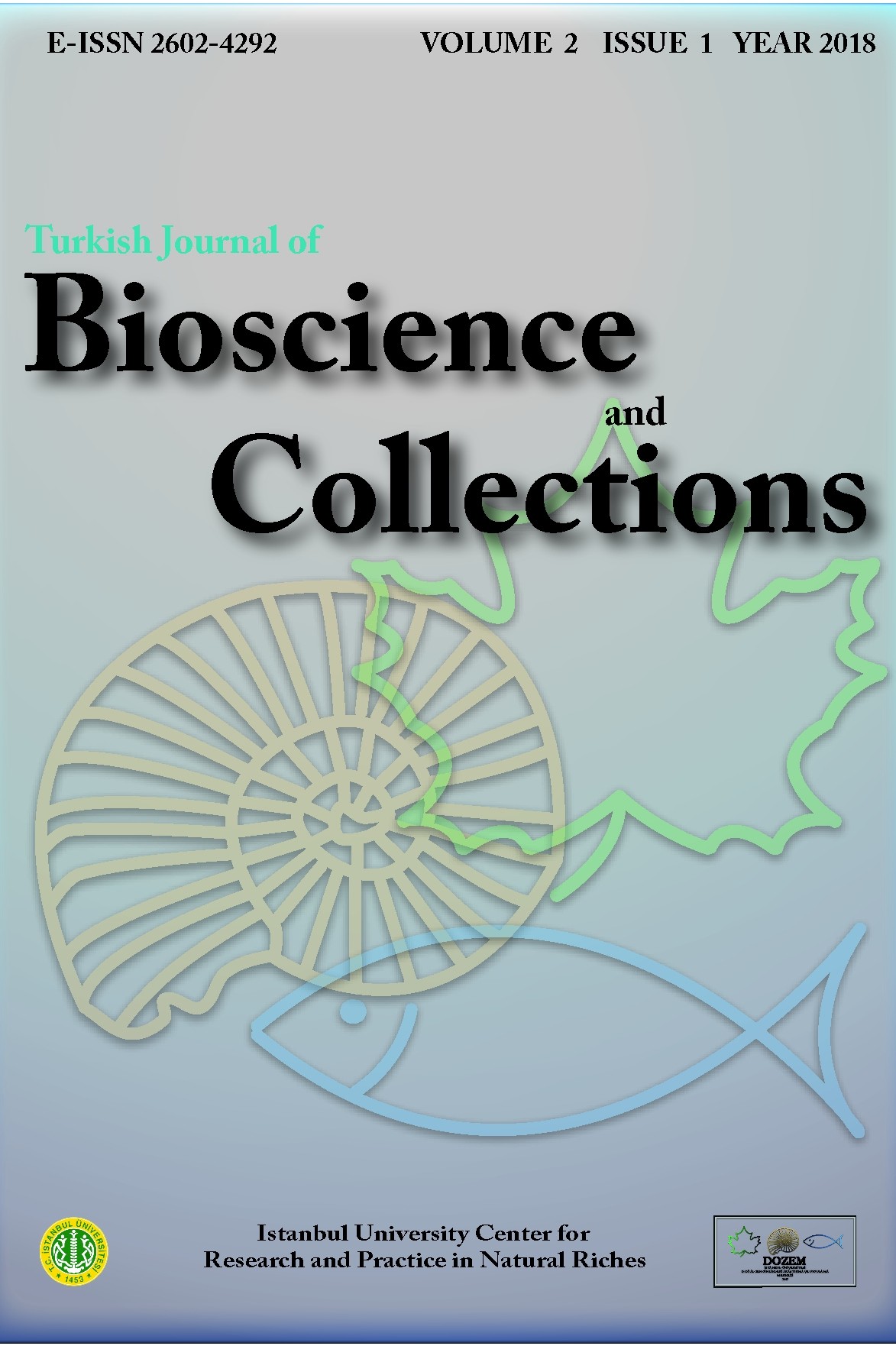Evaluation of Siamese Twins of Testudo graeca Linnaeus, 1758
Evaluation of Siamese Twins of Testudo graeca Linnaeus, 1758
Anatomy, Computed tomography Common tortoise, Pamukkale ruins, Siamese twins,
___
- Barbour, E. H. (1888). On a young tortoise, Chrysemys picta, with two heads.The American Journal of Science [third series.] Vol. XXXVI, No. 214.--OCT., 1888, pp. 227-230 & Plate V. google scholar
- Başoğlu, M., & Baran, İ. (1977). Türkiye Sürüngenleri Kısım I. Kaplumbağa ve Kertenkeleler. Ege Üniversitesi Fen Fakültesi Kitaplar Serisi, 76, 272 pp. google scholar
- Cooper, J. E. (2009). Conjoined (“Siamese”) twins of the leopard tortoise (Geochelone pardalis), with a plea for documentation of such abnormalities in reptiles. Journal of Herpetological Medicine and Surgery, 19(3), 69-71. google scholar
- Dabin, W., Cesarini, C., Clemenceau, I., Dhermain, F., Jauniaux, T., Van Canneyt, O., & Ridoux, V. (2004). Double-faced monster in the bottlenosed dolphin (Tursiops truncatus) found in the Mediterranean sea. Veterinary Record: Journal of the British Veterinary Association, 154(10). google scholar
- De Silva, A., Bandaranayake, R., & Karunarathna, S. (2020) Note on a case of congenital twinning of the star tortoise (Geochelone elegans) in Sri Lanka, Radiata 29 (4). google scholar
- Dimitropoulos, A. (1985). A case of living twins in a single egg of the Marginated tortoise, (Testudo marginata Schoepff, 1792) in a clutch taken from the wild. Herptile 10(3):79-80. google scholar
- Eckert, K. L. (1990). Twinning in leatherback sea turtle (Dermochelys coriacea) embryos. Journal of Herpetology, 24(3), 317-320. google scholar
- Edwards, G.. (1751). A Natural History of Birds, Part IV, p. 206. google scholar
- Harkewicz, K. A. (2002). Prolapse of the penis in a pair of cojoined twin male Hermanns tortoises (Testudo hermanni spp.). In Proceedings of the Association of Reptilian Amphibian Veterinarians Conference, Reno. google scholar
- Hildebrand, S. F. (1938). Twinning in turtles. Journal of Heredity, 29(7), 243-254. google scholar
- Hiraga, T. & Dennis, S. M. (1993). Congenital duplication. Veterinary clinics of North America: Food animal practice, 9(1), 145-161. google scholar
- Molina, F. B., Farias, E. C. & Gomes, N. M. B. (1996). Case of twinning in the d’ORBIGNY’s slides, Trachemys dorbigni (Testudines, Emydidae). Bulletin of Chicago Herpetological Society, 31(8), 145-6. google scholar
- Mostafa, M. B., Koma, K. L. M. K. & Acon, J. (2005). Conjoined twin piglets. The Veterinary Record, 156(24), 779. google scholar
- Newman, H. H. (1917). The biology of twins (mammals). University of Chicago Press. google scholar
- Newman, H. H. (1923). The physiology of twinning. University of Chicago Press, Chicago, 1923, 230 pp., 71 figs. google scholar
- Pereira, R. & Rocha, S. (2004). Chioglossa lusitanica (golden-striped salamander): Dicephalic larva. Herpetological Bulletin, (87), 29-30. google scholar
- Sönmez, B., Sert, M., Kayikçi, S., Bedirci, Ö., & Özdilek, Ş. Y. (2017). A two-headed green sea turtle (Chelonia mydas) hatchling on Samandağ beach, Turkey. Russian Journal of Herpetology, 24(2), 158-162. google scholar
- Stockard, C. R. (1921). Developmental rate and structural expression: an experimental study of twins,‘double monsters’ and single deformities, and the interaction among embryonic organs during their origin and development. American Journal of Anatomy, 28(2), 115-277. google scholar
- Tiar-Saadi, M., Tiar, G., Bouslama, Z., & Siroky, P (2022). Mechanisms Determining Body Size and Shape Difference in Algerian Spur-Thighed Tortoises (Testudo graeca). Animals, 12(10), 1330. google scholar
- Tucker, J. K. (1996). Two examples of twinning in the red-eared slider (Trachemys scripta elegans). Bull. Chicago Herp. Soc. 31, 41-43. google scholar
- Tucker, J. K. & Janzen, F. J. (1997). Incidence of twinning in turtles. Copeia, 166-173. google scholar
- Tucker, J. K., and R. S. Funk. 1976. Twinning in the Gulf Coast box turtle, Terrapene carolina major. Florida Scientist 39:238-239. google scholar
- Velo-Ant6n, G. Becker, C. G. & Cordero-Rivera, A. (2011). Turtle carapace anomalies: the roles of genetic diversity and environment. PLoS One, 6(4), e18714. google scholar
- Yntema, C. L. (1970). Twinning in the common snapping turtle, Chelydra serpentina. The Anatomical Record, 166(3), 491-497. google scholar
- Yayın Aralığı: Yılda 2 Sayı
- Başlangıç: 2017
- Yayıncı: İstanbul Üniversitesi
Evaluation of Siamese Twins of Testudo graeca Linnaeus, 1758
Ayfer ŞİRİN, Serdar DÜŞEN, Eyup BAŞKALE
Biyoçeşitlilik Koleksiyonlarının Dijitalleştirilmesi ve Aydınlatma Kabini Tasarımı
Hakan CALISKAN, Hatice Kübra YALÇIN
Fulgence Ntangere MPENDA, Cyprian Beda MPİNDA, Simeon Phares NSİNDAGİ
Ömer YÜZER, Ersin DOĞAÇ, Alper TONGUÇ, Evin GÜNENÇ
Deniz ERGÜDEN, Servet Ahmet DOĞDU, Cemal TURAN
Taylan DOĞAROĞLU, Evin GÜNENÇ, Rumeysa Yeşim MANAP, Vatan TAŞKIN, Belgin GÖÇMEN TAŞKIN, Ersin DOĞAÇ
